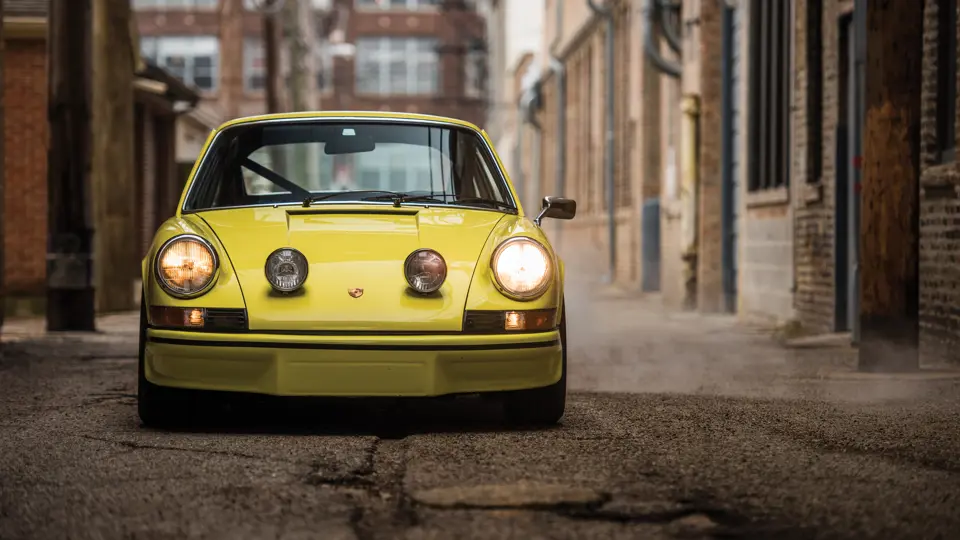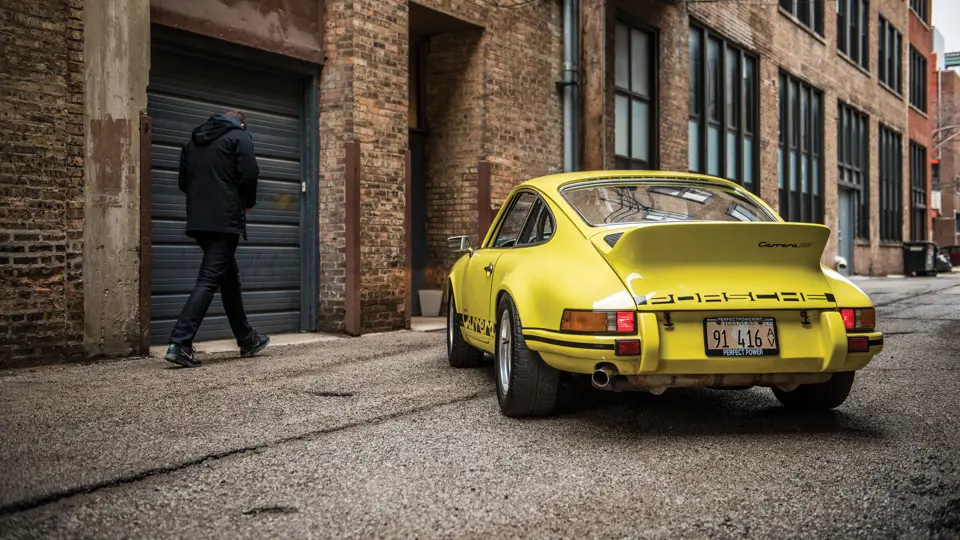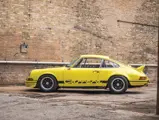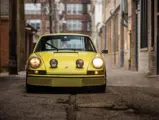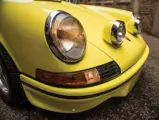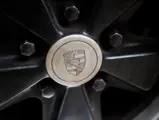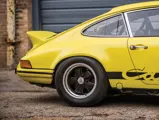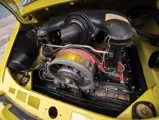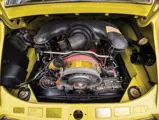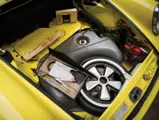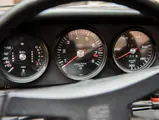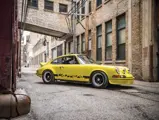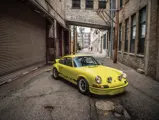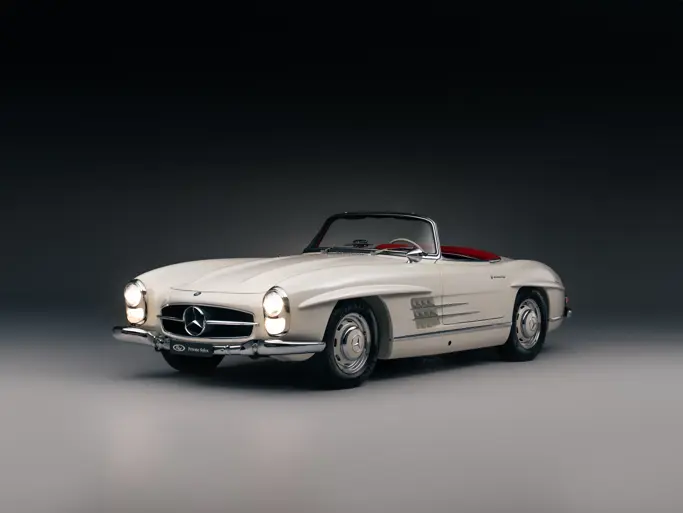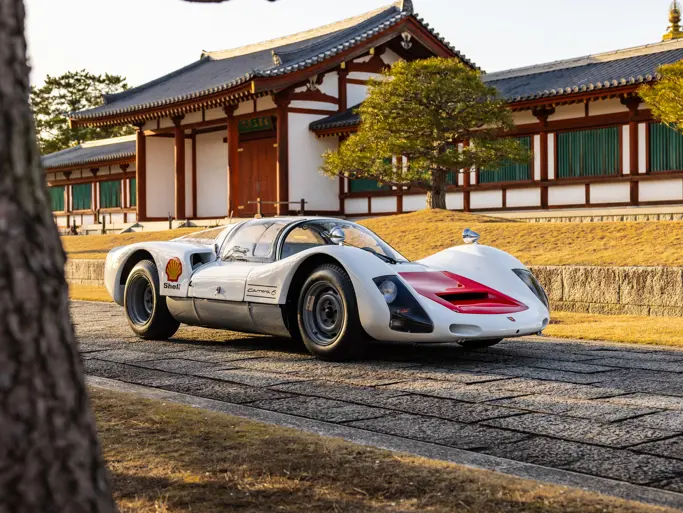
1973 Porsche 911 Carrera RS 2.7 Lightweight
{{lr.item.text}}
$869,000 USD | Sold
Offered from a Private Collection
{{bidding.lot.reserveStatusFormatted}}
- Offered from a private collection
- One of 200 lightweight Sport versions
- One of the first 500 Carrera RS examples
- Original numbers-matching engine and gearbox
- All original bodywork and major chassis components
- Well-documented chain of ownership since new
- Accompanied by Porsche COA, Fahrzeugbrief, and service invoices
- Remarkably original and un-damaged example of Porsche’s celebrated homologation special
210 bhp, 2,681 cc SOHC air-cooled horizontally opposed six-cylinder engine with Bosch mechanical fuel injection, five-speed manual transmission, independent front suspension with Bilstein gas-pressurized shock absorbers, torsion bar rear suspension with Bilstein gas-pressurized shock absorbers and anti-roll bar, and four-wheel ventilated disc brakes. Wheelbase: 89.3 in.
In mid-1972, under a cost-saving approach encouraged by the recently re-hired Dr. Ernst Fuhrmann, Porsche breathed new life into the 911 model, which had become somewhat stagnant from a competition standpoint. Starting with the 911 S platform, Weissach’s engineers built a racing homologation special by first lightening the car substantially, removing all sound deadening and comfort features. The rear fenders were then flared to accommodate wider tires on forged alloy Fuchs wheels.
Thinner-gauge Glaverbel glass was exchanged for the regular production glass, while the chassis was upgraded with forged-alloy front-axle supports, reinforced rear-axle trailing arms, and Bilstein gas-pressurized shock absorbers at all four corners. The finishing touch was an improved version of the classic Porsche flat-six engine, which was re-classified as the type 911/72 motor after the cylinders were bored to displace just under 2.7 liters and lined with Nikasil.
The new model won the Group 5 GT Championship in September 1972, and a month later at the Paris Auto Salon was officially introduced as the Carrera RS. Stuttgart planned a minimum of 500 examples to meet homologation requirements, and they quickly sold out during the Paris exhibition. Another 500 examples were soon green-lighted, and the model ultimately proved so popular that 1,525 examples were manufactured by the end of 1973. Approximately 1,308 of these cars were ordered with the M472 Touring package, which essentially added back the 911 S interior niceties that made daily use far more forgiving.
At the other end of the spectrum, 200 examples were produced as pure lightweight racers, which were specified for competition use and completely lacked comfort amenities. A dominant force in Group 3 and 4 competition during 1973, the Carrera RS 2.7 Sport (or Lightweight) eventually became the basis for Norbert Singer’s highly successful RSR race cars. The rare model is now prized by Porsche enthusiasts for its competition mandate, sportier aesthetics, and genetic link to the mighty 934 and 935 race cars that soon followed.
This extremely original Carrera RS is one such lightweight example built, and one of the first 500 cars to roll off the assembly line. Properly finished in its original factory color livery, and retaining its original matching-numbers 2.7-liter engine and factory-issued gearbox, this 911 is a faithful and well-documented example.
According to a Porsche Certificate of Authenticity, chassis number 9113600336 completed assembly on 23 December 1972, finished in Light Yellow and upholstered with a black leatherette interior. As a lightweight example, this Carrera RS was equipped with no major options, with the exception of Dunlop performance tires.
The original Fahrzeugbrief documents the early ownership of this Porsche, indicating that the first owner, Michael Wagner of Friedburg, Germany, took possession on 22 January 1973. In 1978, he sold the 911 to Joachim Erhardt of Stuttgart, who sold it two years later to Richard Alexander, an American working for IBM in Germany. Mr. Alexander imported the European-specified car to the United States upon his return, and the 911 was domiciled for roughly three years on his farm in Watsonville, California.
In 1987, the Carrera RS was purchased from Alexander by Phillip Bagley of Anniston, Alabama, known for his involvement with Klub Sport Racing, a vintage Porsche brokerage and restoration house in Riviera Beach, Florida. Bagley repainted the exterior in the correct original shade of yellow, installed a factory-style rollbar, and freshened the engine for a return to driving use.
In 1995, the RS 2.7 was acquired by Porsche collector David Geremia of Waterbury, Connecticut, and he retained possession for seven years before offering the car for sale in 2002. The consignor, a respected collector based in Chicago, retained well-known Porsche specialist John Starkey to inspect the 911, and his written report reflects that it remained in very original condition, including the original engine and gearbox. All the original thin-gauge glass and body panels remained in place, and the exterior remained properly painted in correct Porsche light yellow, with the proper black Carrera script along the sills.
After purchasing the Porsche in May 2002, the consignor mechanically freshened the car, including the installation of a new fuel pump, plugs and points, hoses, and other various gaskets and soft parts. To bolster the 911’s authenticity, he sourced a correct Carrera RS steering wheel from Germany, as well as the aforementioned Certificate of Authenticity from Porsche.
One of just 200 Lightweight examples built for 1973, chassis 913600336 is a highly authentic and mechanically original example of Stuttgart’s great Carrera RS. It would make a fantastic complement for any Porsche and sports car aficionado and promises to receive a warm welcome at PCA events and regional concours d’elegance.




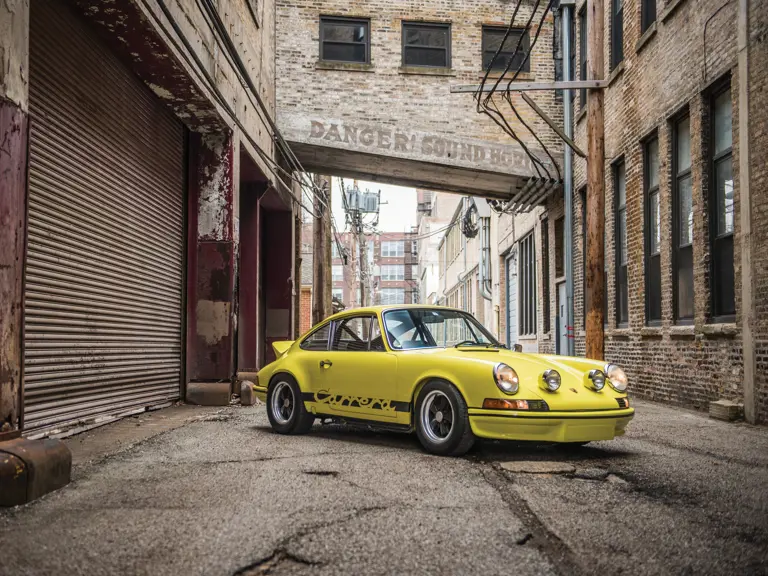


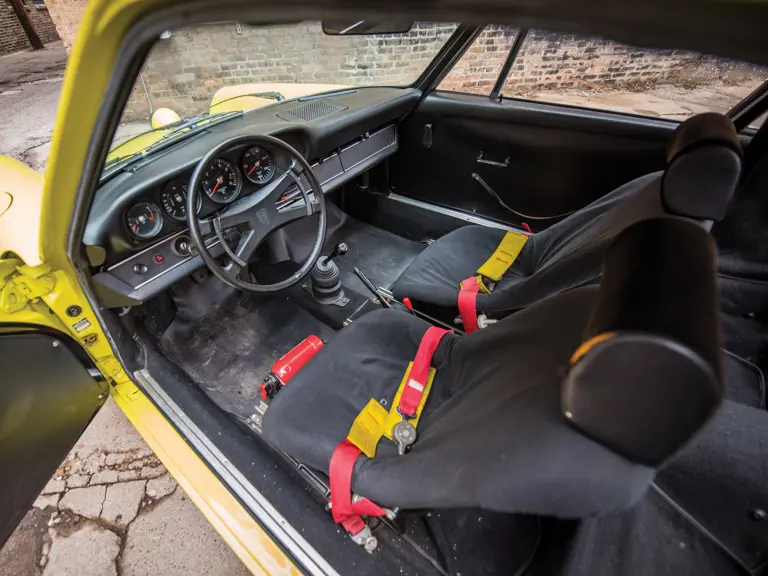
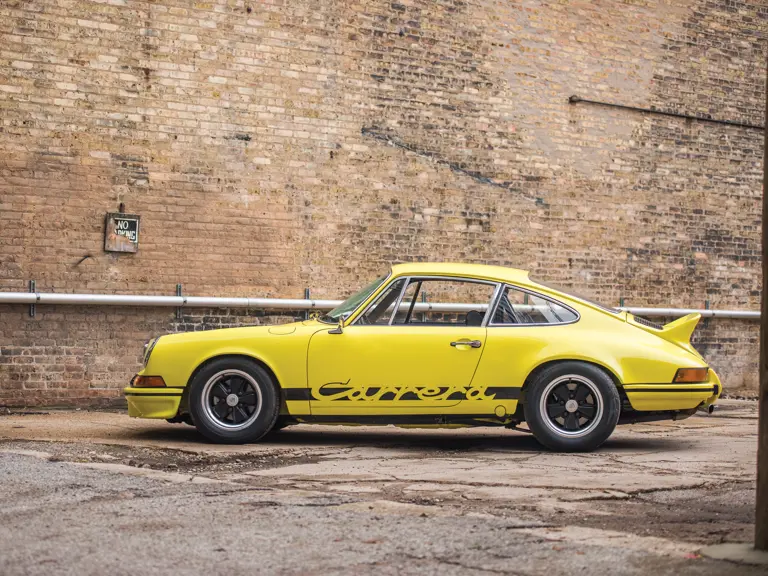

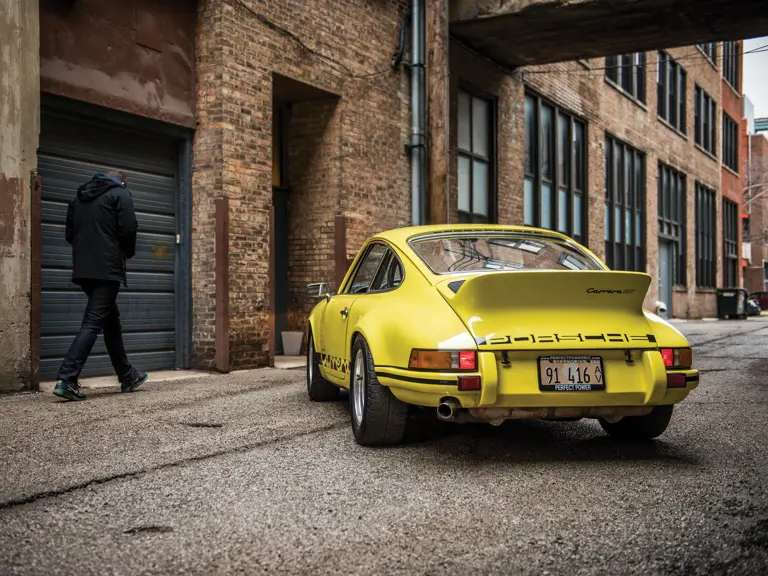

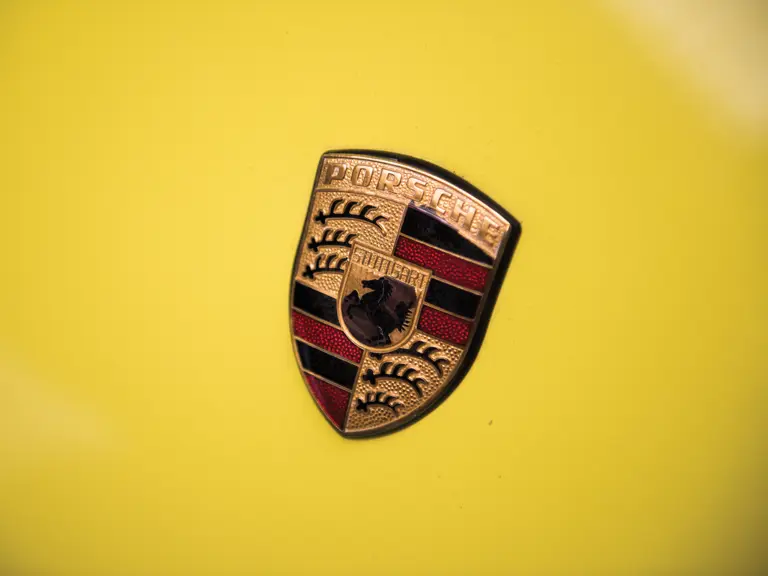
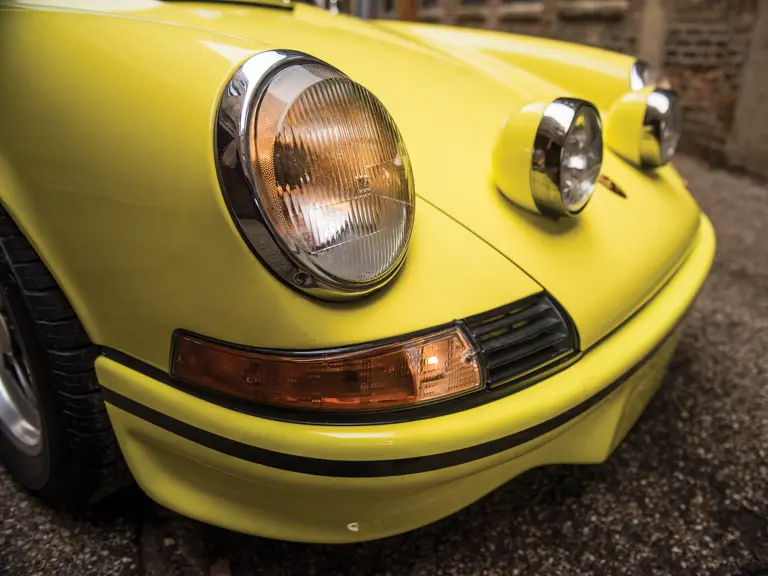
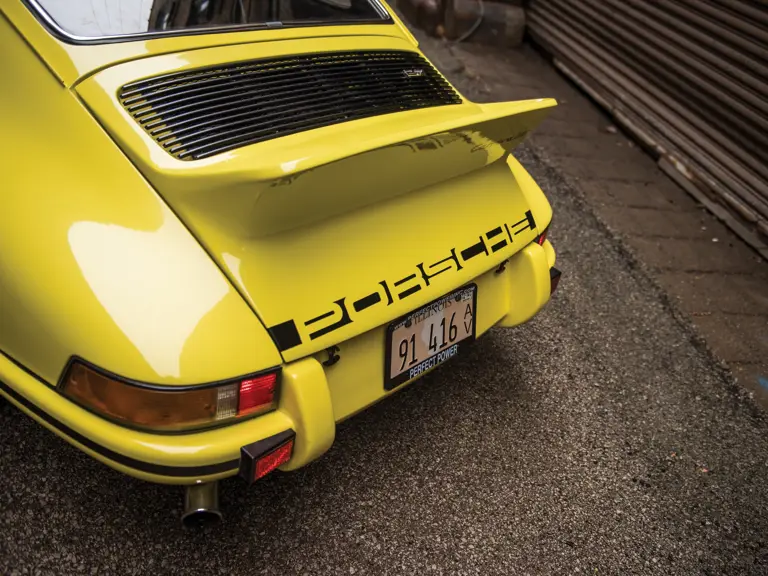
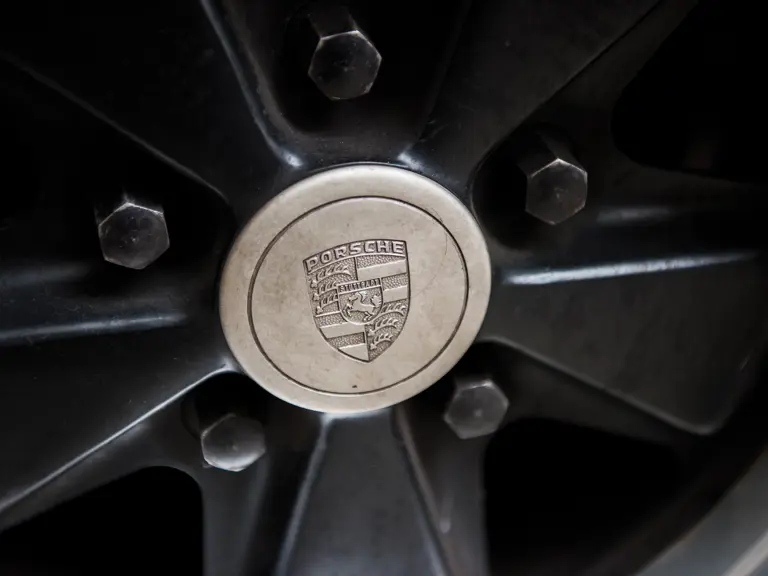
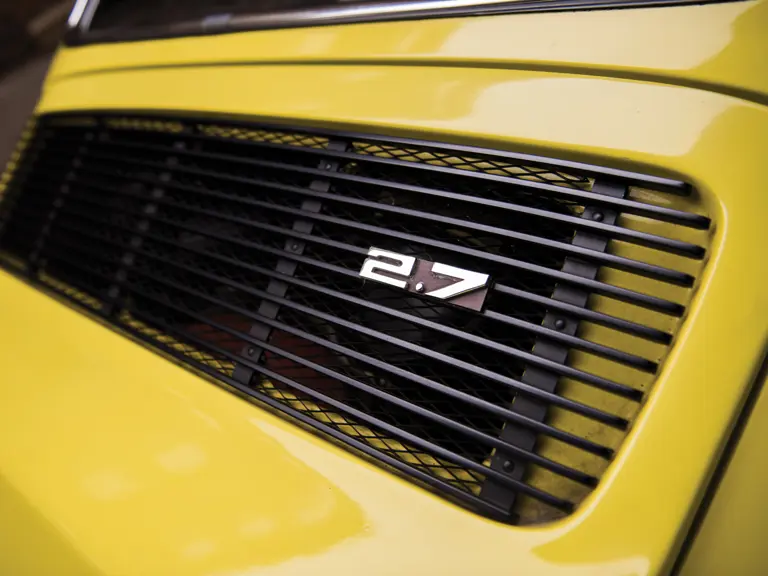
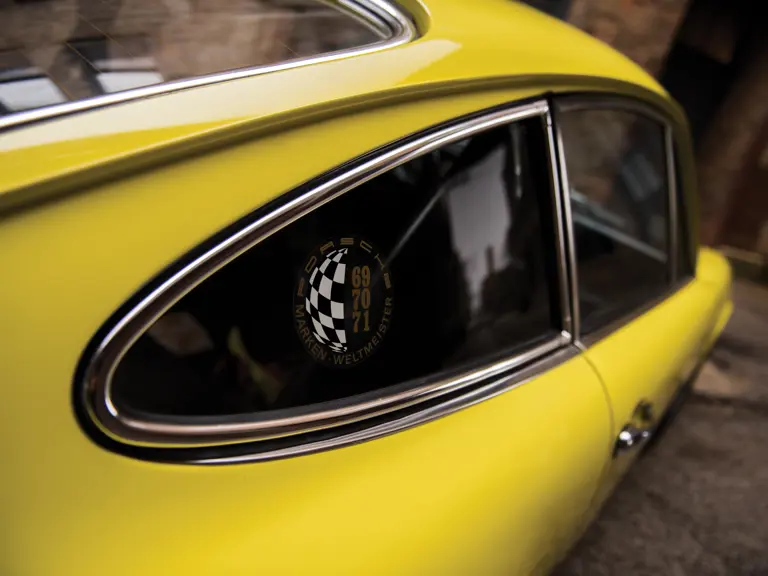
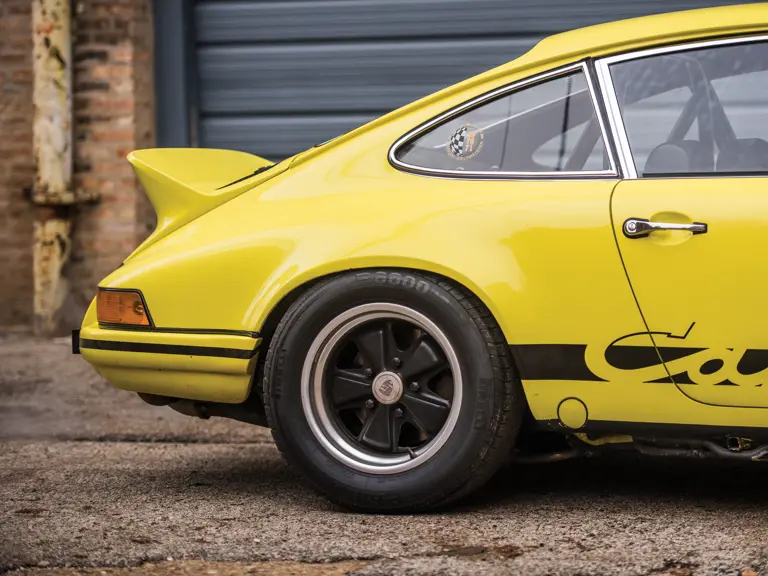
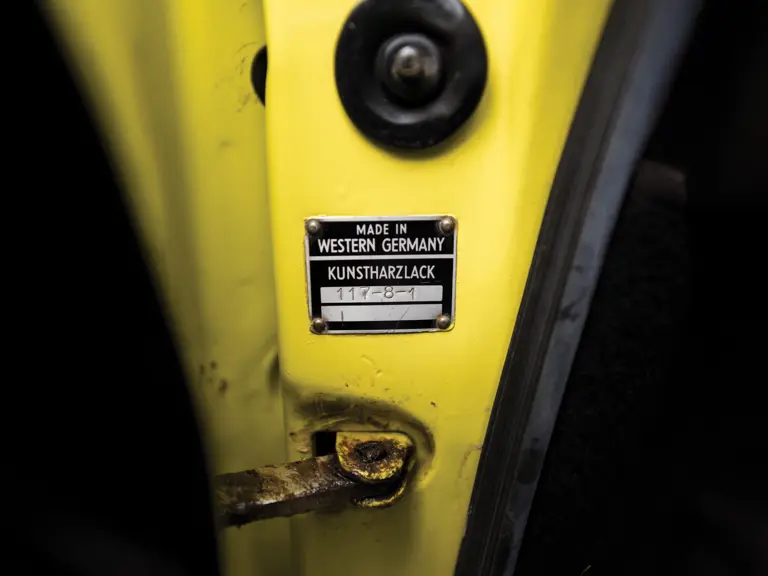
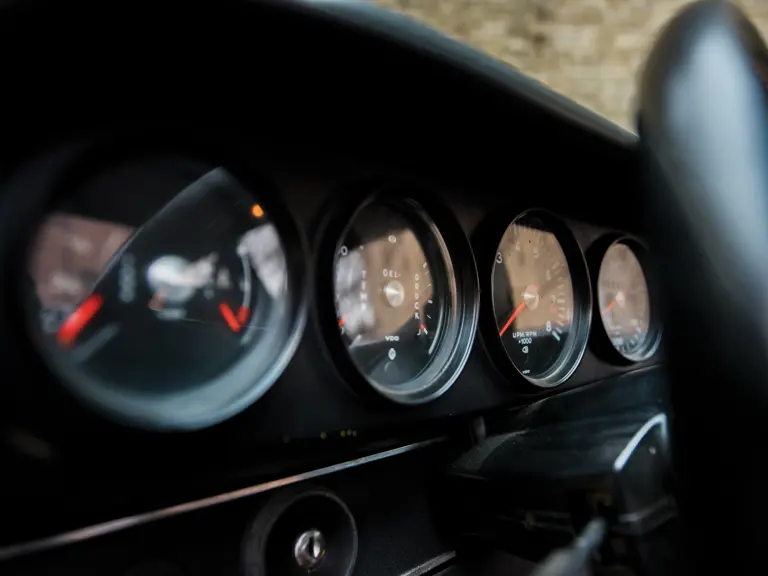
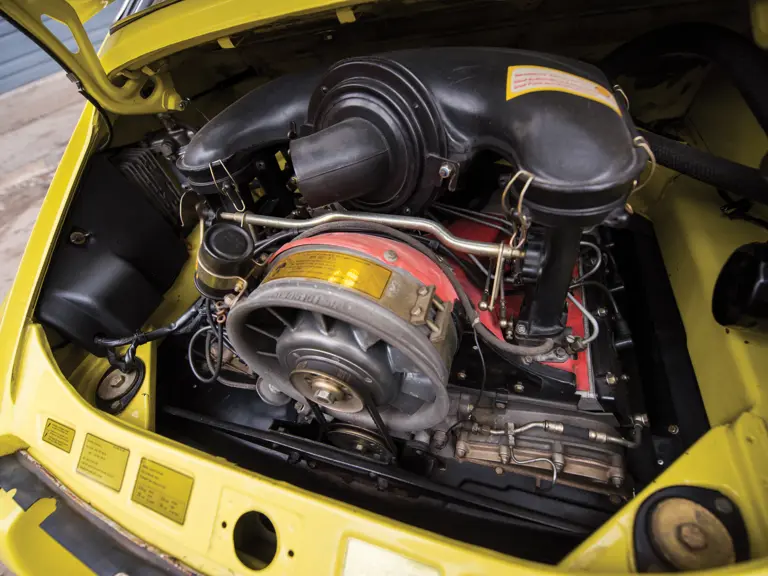
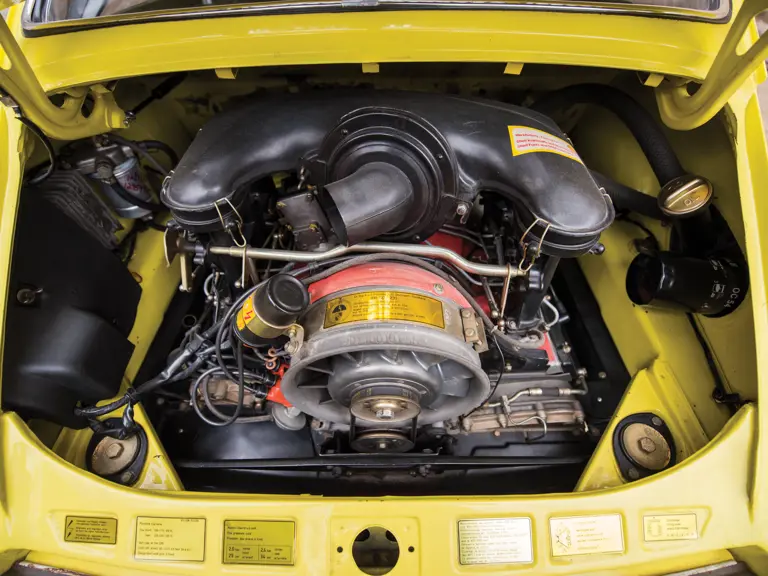

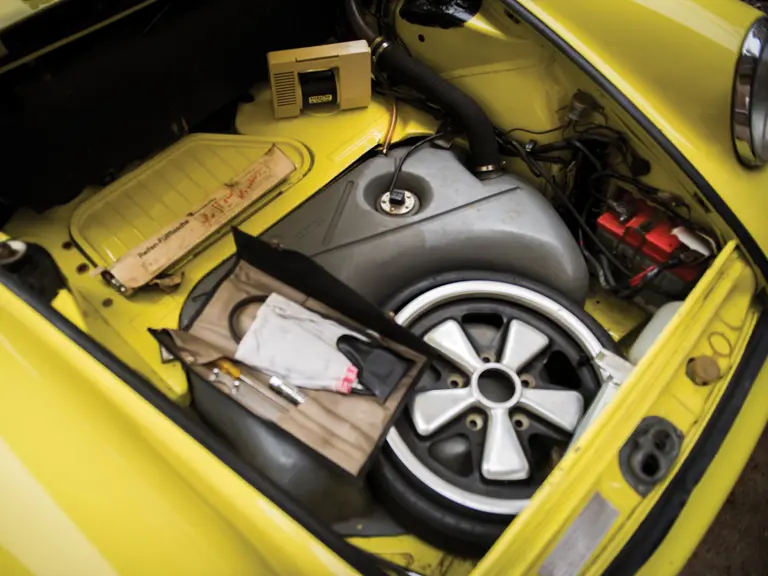
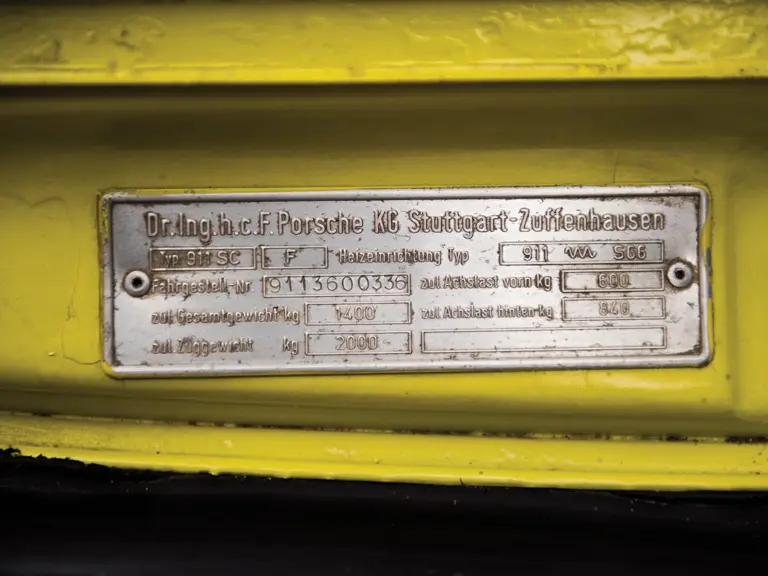


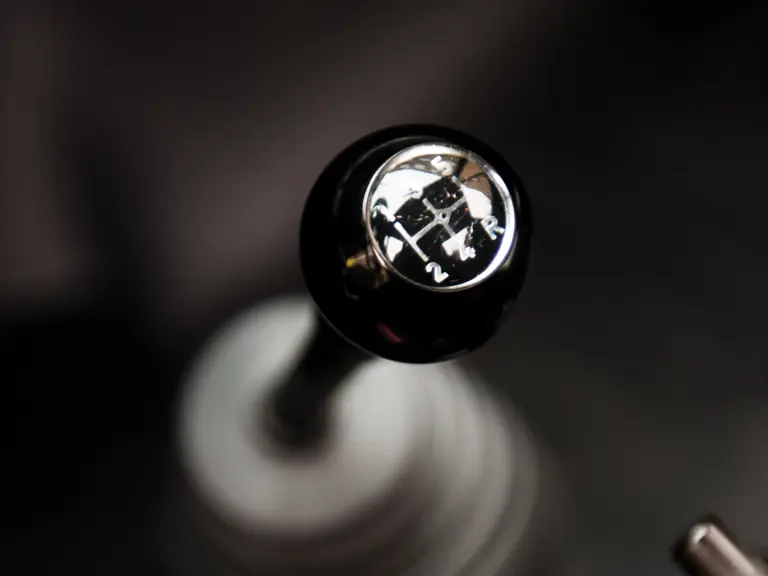
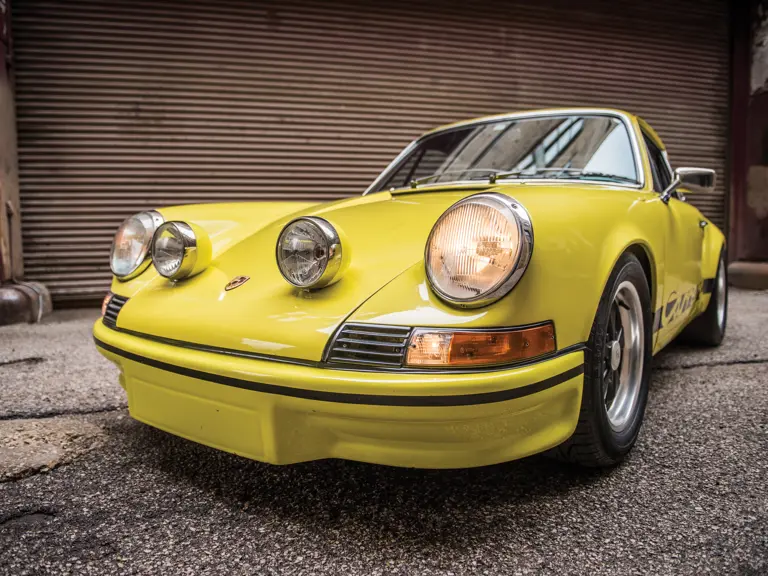
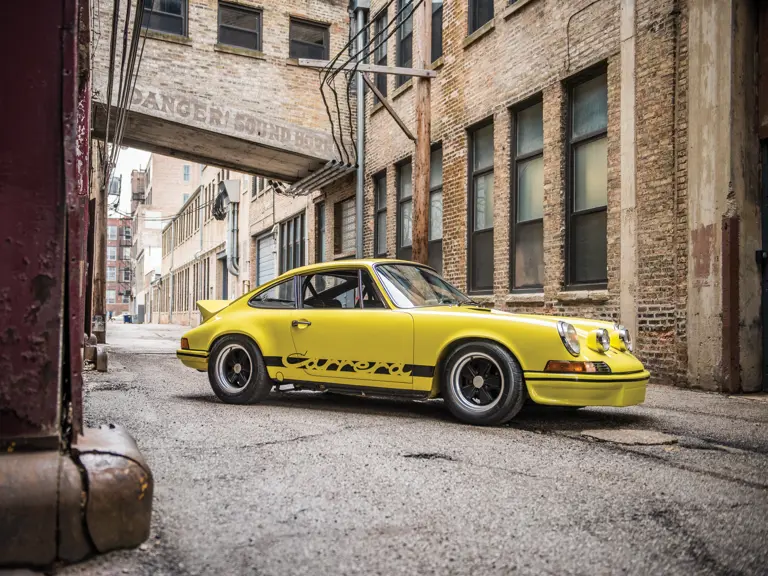

 | Amelia Island, Florida
| Amelia Island, Florida

